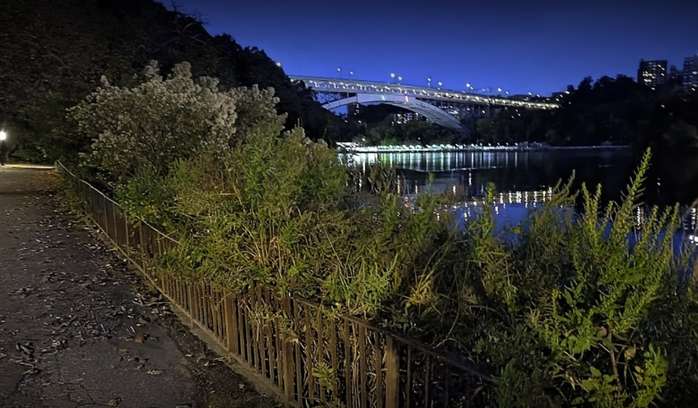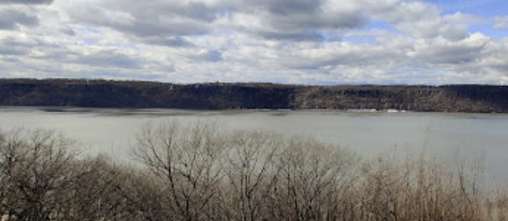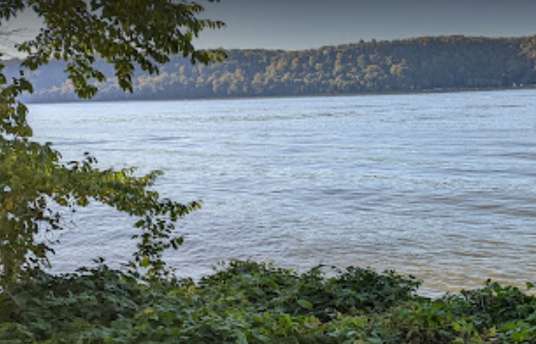
The Inwood State Park is a public park in Manhattan within New York City. This park is in the Inwood Neighborhood and is managed by the NYC Department of Parks and Recreation. The Inwood State Park is situated on the northernmost tip of Manhattan Island above the Hudson River. This park also contains the Shorapok preserve, one of the largest old-growth forests on Manhattan Island. The Inwood Hill Park stands out from the other Manhattan parks as it remains a natural park with non-landscaped hills and great wooded expanses.
About Inwood Hill Park
Some say the history of Inwood park goes way back to Pre-Columbian times. Throughout the 1600s, this park was occupied by the Wecquaesgeek or the Lenape people. These people relied on the Harlem and Hudson rivers as their main food source. The Indian caves discovered in Inwood Hill Park served as temporary living quarters and rock shelters for people of the tribe.
A fort known as Fort Cockhill lies on the northwestern edge of Inwood Hill Park. The Continental Army created this fort during the revolutionary war. This fort is a small structure with five sides. It also has two cannons attached to it. From colonial times to the post-revolutionary war period, this area was known as Cox’s Hill. It was also often referred to as Tubby Hook Hill.
Various types of animals reside in Inwood Hill Park. These animals include cottontail rabbits, southern flying squirrels, deer mice, opossums, raccoons, skunks, and salamanders. Foxes, raccoons, and coyotes have also been sighted in the park. Large mammals are not found very often in this park.
The Inwood Hill Park is one of the most unique parks in Manhattan. It is quite unlike Central Park, Manhattan’s other woodland expanse. Central park was built from the ground up, while Inwood Hill Park is mostly natural and undeveloped. By the end of the 1880s, only a few farms and structures existed on this land.
As this land was largely untouched, the Inwood areas became the focus of several archeological diggings in the late nineteenth and early twentieth centuries.
Archeologists such as Reginald Pelham Bolton, Alexander Chenowith, and many others have discovered collections of tools, human remains, pits, and pots from the Inwood areas. This led to the understanding that the Native American Tribe of Lenape occupied Manhattan before to British and Dutch colonized the lands. Caves were also excavated and discovered in the Inwood areas known as Indian caves or the Inwood Native American Caves.
Indian Caves
Located just a few minutes from the subway, one can enter Inwood Hill Park and view the majestic Indian caves. These Indian caves are a rare historical site tucked away within the park. The Native American Lenape People inhabited the Manhattan region and used these caves as seasonal camps. The Lenape Tribe called Manhattan their home before Henry Hudson, the explorer, arrived in 1609.
The Indian Caves site is a reminder of the native people who inhabited the island of Manhattan. These caves were created through rocks tumbling during the glacial retreat more than thirty thousand years ago. Today the Indian caves look less like caves but instead resemble boulders stacked on each other. The area surrounding the Indian caves is serene and picturesque. Both hikers and bird-watching enthusiasts often frequent it.
These caves were discovered when Alexander Chenowith stumbled across a curious-looking rock formation not very far away from his home uptown. Chenoweth was an engineer by profession and was known for designing the base of the statue of Liberty. However, archeology was his passion, and he took up the job of an amateur archeologist on the weekends. Chenoweth came across this queer-looking rock formation in the nineteenth century’s final decade and began carefully exploring the area. The caves were known as ‘the Clove’ at the time and lay in the Inwood Hill area.

Upon exploring the inside of the caves, Chenoweth initially just found dirt and debris. But soon, he came across several small caves. Upon exploring the small chambers of the caves, he uncovered axes, pots, and several other artifacts that the Lenape people once used. The tribesmen mostly used these objects when they occupied the caves as their seasonal camp.
By exploring the natural setting of the Indian Caves and Inwood Hill, explorers could also decipher and document the lives of Manhattans’ original inhabitants. Archeologists discovered arrowheads, amulets, and human remains throughout the natural landscape of the woods.
How to Get to the Indian Caves?
To get to the Indian Caves, enter Inwood Hill Park from the north end. This is also the entrance that leads to the woods. Turn left from the Shorakapok rock. You will come across a dirt path that leads towards the right-hand side. Ignore the first path, but take any of the three paths that follow. All three of these paths will take you to the Indian Caves.

Park Usage
Today Inwood Hill Park contains playgrounds for children, basketball courts, tennis courts, and baseball and soccer fields. An Inwood Hill Nature Center is also located on the park’s northern edge. This center is known for hosting many educational programs. Visitors also frequent the park to absorb the greenery and have barbeques and picnics with friends and family.
Concluding Thoughts
If you are a history enthusiast and want to see the Indian Caves, do visit the Inwood Hill Park. Studying the Indian Caves and the surrounding natural woods gives us an idea of how the Native American Lenape people lived. Today Inwood Hill Park also offers other recreational activities such as picnic spots, playing fields, and an education center.
